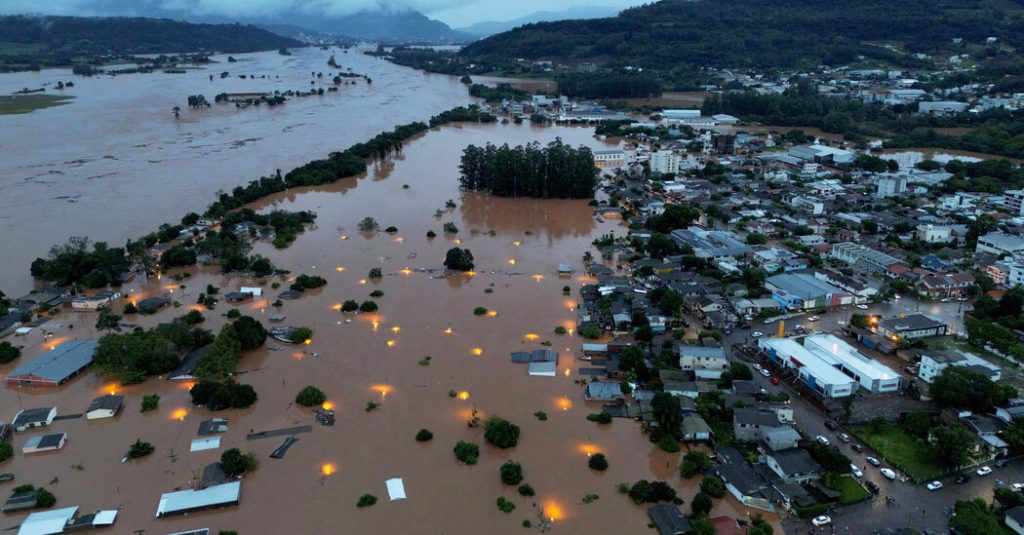Heavy rains have caused devastation in southern Brazil, leaving at least 29 people dead and 60 missing. The state of Rio Grande do Sul received an abnormally high amount of rain in a short period of time, resulting in flooding, landslides, and other damages. Rivers swelled, bridges collapsed, and roads were blocked, leaving some towns isolated and residents stranded on their rooftops. Nearly 10,000 people have been forced to flee their homes, prompting the governor to declare a state of emergency.
Rescue efforts have been hindered by difficult conditions, with search-and-rescue teams struggling to reach isolated areas due to high river levels and heavy flooding. Some helicopters have used winches to pull up residents from flooded areas where there is nowhere to land. With meteorologists warning of more rain in the coming days, there are concerns that rescue efforts could become even more complicated. The president of Brazil, Luiz Inácio Lula da Silva, has promised federal support to assist with the crisis.
The extreme weather event in Rio Grande do Sul has been described as the worst disaster in the history of the state. Authorities have acknowledged that they will not be able to rescue everyone affected by the flooding, highlighting the urgent need for assistance. Last year, a similar weather event caused 37 fatalities in the same region. The national weather institute has attributed the heavy rains to the natural weather phenomenon known as El Niño, which can bring heavy rains to southern Brazil while causing drought in the Amazon rainforest.
The heavy rains in Rio Grande do Sul have caused significant damage and loss of life, prompting a massive response from emergency services and government officials. The state’s civil defense agency has reported thousands of people forced to evacuate their homes, with many areas experiencing severe flooding and destruction. The state of emergency declared by the governor reflects the seriousness of the situation and the challenges faced by residents and rescuers.
The situation in Rio Grande do Sul is an urgent humanitarian crisis, with residents in need of immediate assistance and support. The extent of the damage caused by the heavy rains will require long-term recovery efforts to rebuild homes, infrastructure, and communities. The impact of the flooding on the region underscores the need for preparedness and resilience in the face of extreme weather events, as climate change continues to increase the frequency and intensity of natural disasters. The response to this disaster will require coordinated efforts from local, state, and federal agencies to ensure the safety and well-being of affected residents.


